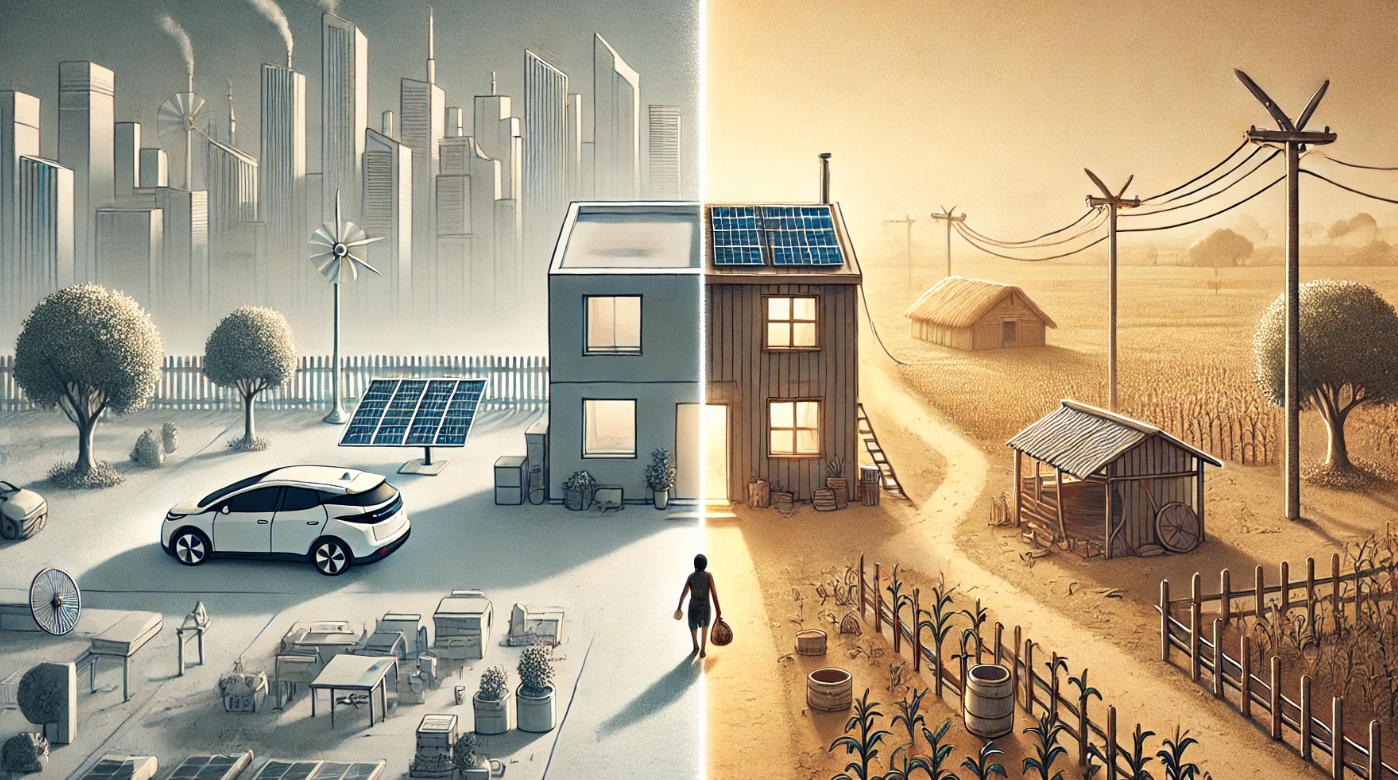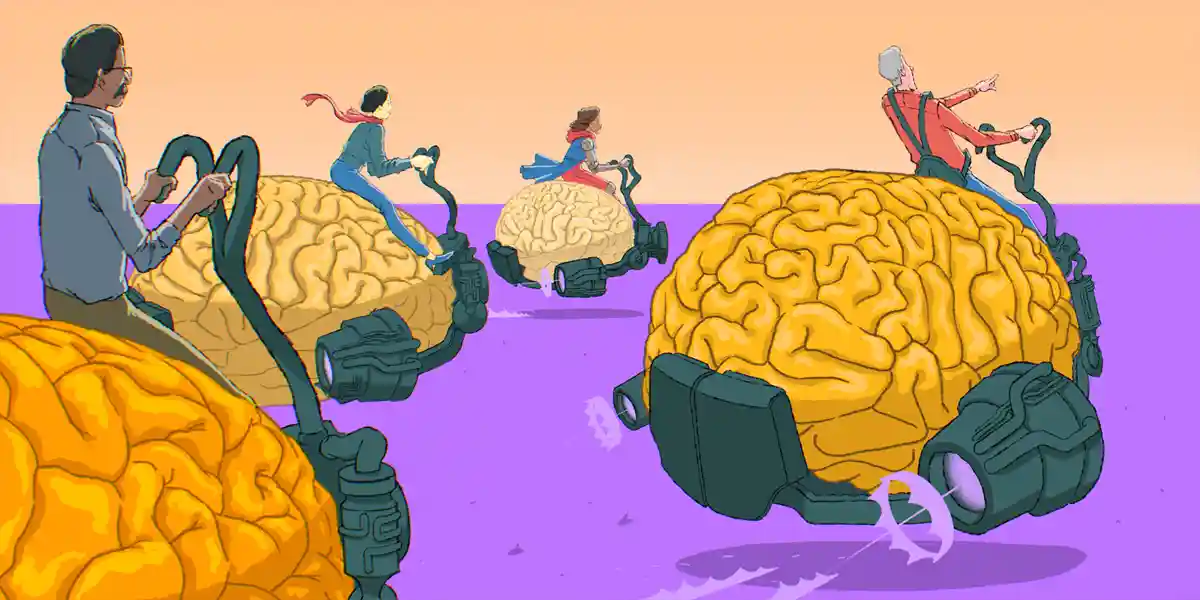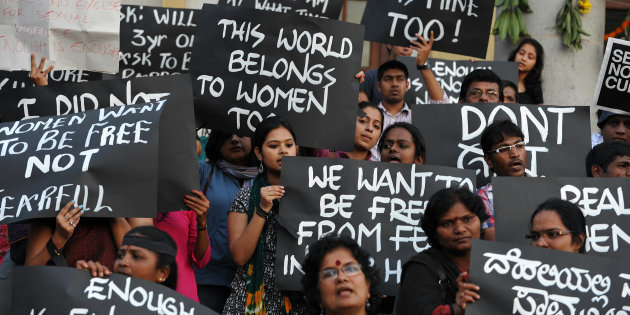By Jamila Talishli and Emre Emirbayer, Year 12
Sustainability is everywhere. It’s in advertising campaigns promoting “green” products, on labels stuck to items at the grocery store, and in countless social media posts urging us to adopt these eco-friendly habits. Sustainable living is seen as the ultimate solution to our planet’s environmental crisis, but there is a question beneath this idealized vision: is sustainable living truly accessible to everyone? Or is it a privilege of classes that have the financial means, time and resources to participate in an eco-friendly lifestyle?
As the world is pushing towards a greener future, it’s increasingly important to ask whether sustainable living is truly inclusive to all. Can someone working two jobs afford an electric vehicle and organic groceries? Can low-income families in developing countries adapt to the same eco-friendly habits as urban families with access to premium resources and endless convenience? This article will explore the link between sustainability and privilege and uncover the barriers that prevent equal access to sustainable living.
One of the biggest causes of a barrier to sustainable living is cost. Most eco-friendly alternatives come with a much higher price that renders it unaffordable for lower-income households. For example, organic groceries such as fruits and vegetables, which are seen as healthier and greener alternatives, can cost more than twice as much as conventional groceries, mostly because of the methods required to grow and produce them. Organic farming relies on more labor-intensive methods and avoidance of synthetic pesticides and fertilizers, resulting in higher production costs that translate to the customer as higher prices. This higher cost makes it expensive for many families who already struggle to afford basic groceries, creating a gap where only those more privileged with higher incomes can consistently afford organic eco-friendly food.
This added expense extends well beyond groceries. A recent alternative to gas-powered cars are electric vehicles (EVs), which are promoted as the future of sustainable transport. Manufacturing EVs is more expensive than traditional gasoline-powered cars because of the more expensive materials and advanced technology required, especially for the lithium-ion batteries which power EVs . These high production costs lead to EVs being sold at higher prices, rendering them out of reach for many people, especially those who struggle to afford even second-hand gasoline-powered cars. Furthermore, some developing countries lack the financial resources to invest in the production and promotion of EVs, and lack of infrastructure like charging ports for EVs further discourage EV adoption, leaving citizens with no choice of sustainable transport. Electric vehicles’ high costs and reliance on advanced technology leave them inaccessible to many low-income communities and developing nations, exemplifying how sustainable living is often tied to privilege.
For many people, sustainable living is simply not a priority; not because they don’t care about the environment, but because they are preoccupied with far more concern-worthy issues. Individuals living in conflict zones, extreme poverty, or areas affected by natural disasters often lack the luxury of considering environmental impact. Their daily lives are all about survival: securing food, water, and shelter. For them, questions whether their habits are eco-friendly are merely irrelevant in the face of such urgent needs. These circumstances highlight a dark reality that sustainability is very often a privileged conversation.
Ironically however, poorer people in many ways have much more sustainable lifestyles compared to the wealthy, though not by conscious choice. Limited economic means forced them into the very behaviors that become identified as sustainable living. For instance, people living in impoverished rural communities usually engage in subsistence farming, cultivating their own food and consuming most of it, hence relying little on industrial agriculture and packaged goods. In this kind of life, few resources go to waste, and carbon emissions are less compared to affluent lifestyles characterized by high consumption.
Similarly, those who cannot afford cars often rely on walking, cycling, or using public transport (options that are without a doubt more sustainable than owning a personal vehicle). In many developing countries, the lack of infrastructure for even basic public transport often means citizens must walk long distances which reduces their environmental footprint by necessity. This contrasts with wealthier societies, where excessive consumption, private car ownership and energy use drive environmental degradation. The irony is that sustainable practices are often most visible in communities with the least access to resources, not as a virtue but as a survival strategy.
After examining these contradictions, we see that the link between privilege and sustainability is a nuanced one. While wealthier individuals may have access to technologies and products marketed as “green,” the overconsumption in such lifestyles can significantly outweigh the benefits of their eco-friendly choices. Conversely, those without means often practice “forced sustainability” in a way; yet their contributions are largely overlooked in mainstream narratives about environmentalism. This distinction raises important questions about how sustainable living is defined and who gets to be recognized as contributing to a greener future.



